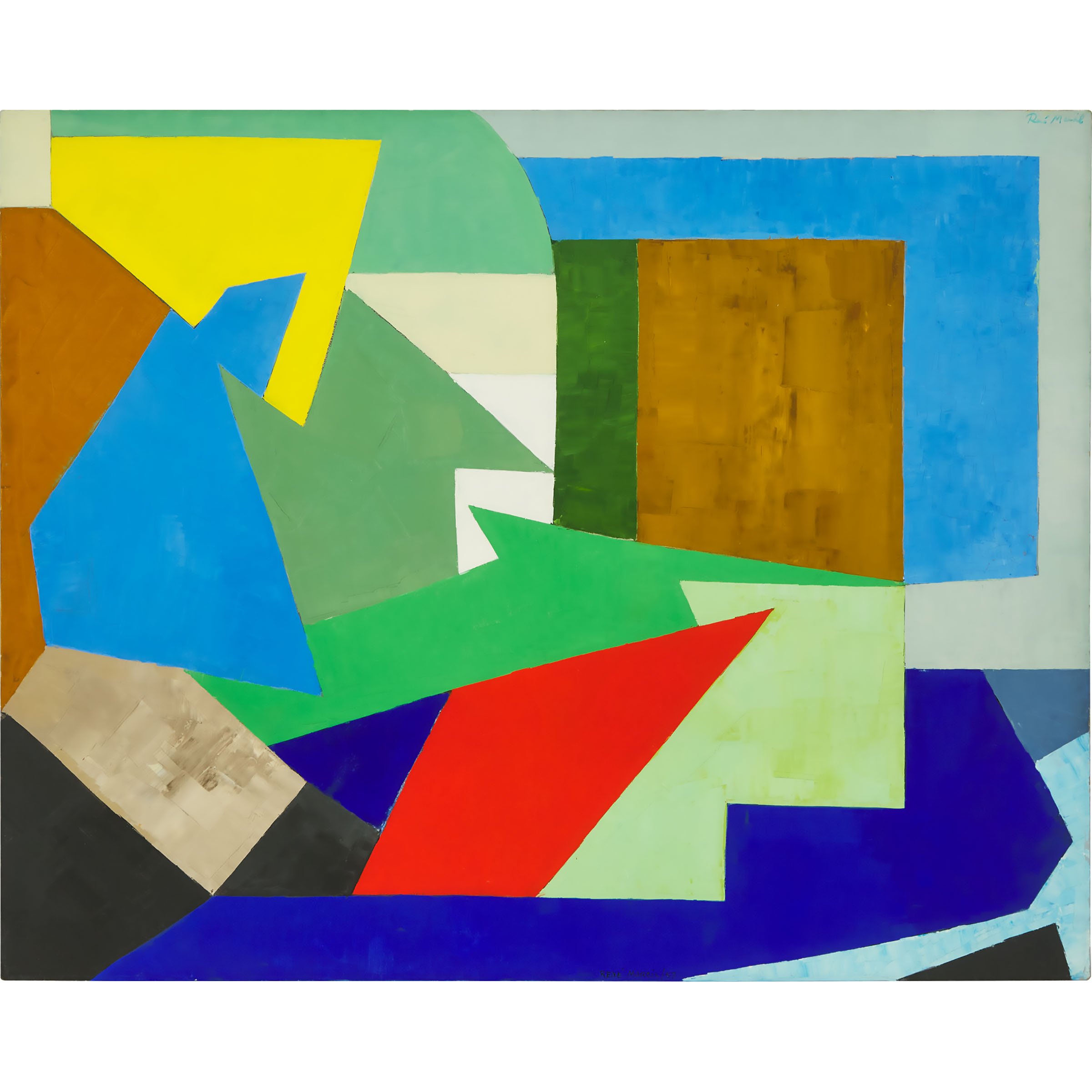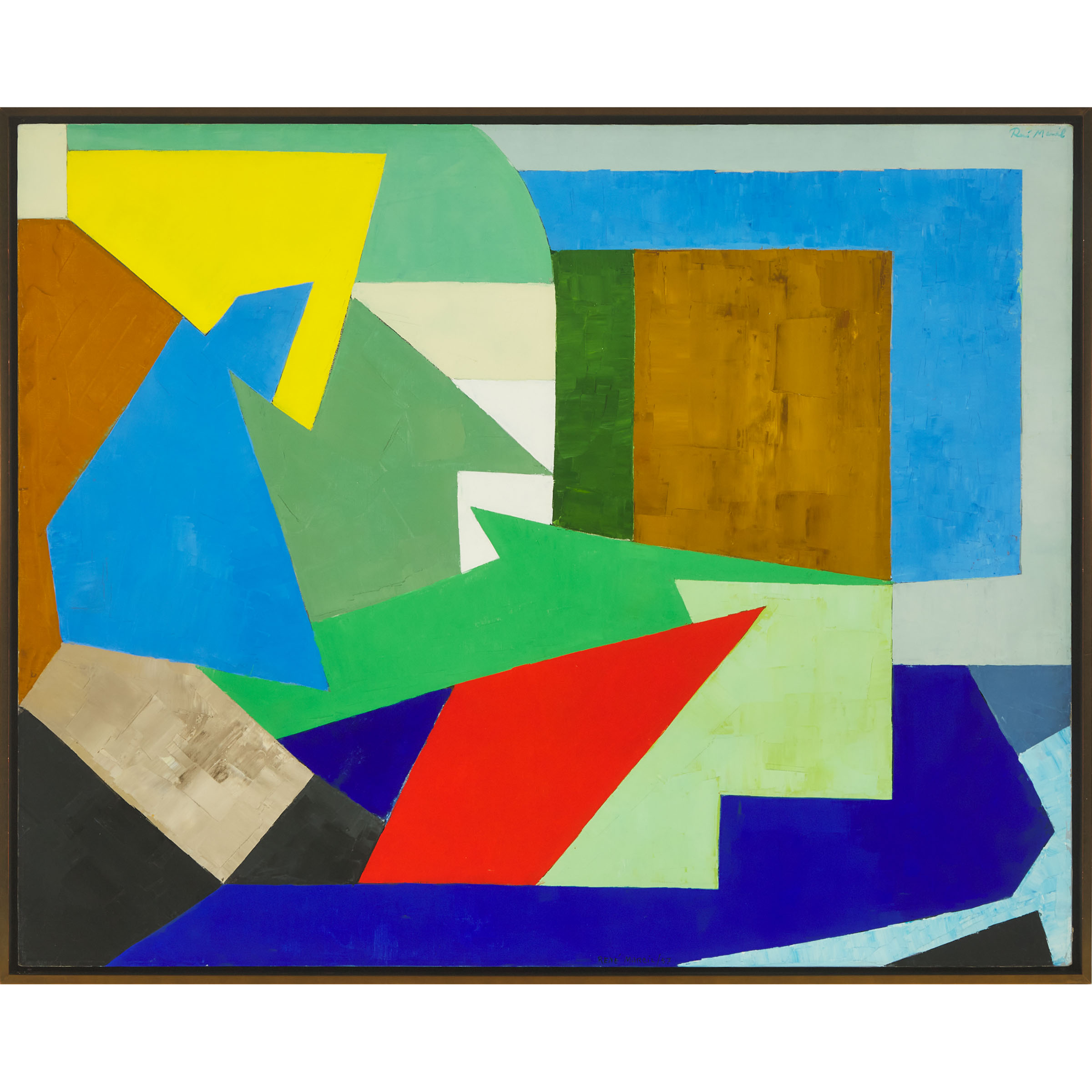Lot 567
René Marcil (1917-1993), Canadian

Additional Images

Provenance:
Patrimoine Marcil, Geneva, Switzerland
Note:
This work is registered with Patrimoine Marcil (Estate of René Marcil) under the number AP- 23.
Marcil would often say, “for me, abstract and figurative are one and the same.” The artist’s ideology was prescient, for decades later, when discussing the work of Piet Mondrian, Ulf Kuster, art historian and senior curator at the Fondation Beyeler, noted that “for an artist it’s not important if it’s representational or non-representational, because it’s always abstract. It’s always abstract, because painting is abstraction.” [1]
Like Mondrian, Marcil intuitively searched for harmony, though seldom through symmetry. At first glance, the composition of Abstract 23 seems random, careful examination reveals a highly directional and expressive arrangement. Nothing is haphazard, with each jigsawed form complementing and amplifying adjacent shapes.
Though Canadian by birth, Marcil’s visual language was strongly European, inspired by the artists he interacted with, including Sonia Delaunay and other members of the Montparnasse avant-garde. Marcil would be influenced by Neoplasticism’s pursuit of the purest, most fundamental expressions. Mondrian, writing the journal De Stijl, explained this “new art”:
As a pure representation of the human mind, art will express itself in an aesthetically purified, that is to say, abstract form. The new plastic idea cannot therefore, take the form of a natural or concrete representation – this new plastic idea will ignore the particulars of appearance, that is to say, natural form and colour. On the contrary it should find its expression in the abstraction of form and colour, that is to say, in the straight line and the clearly defined primary colour. [2]
Abstract 23 aptly demonstrates Marcil’s modern understanding of colour. Kay Kritzwiser, The Globe and Mail’s art critic from 1964-1980, wrote that Marcil “communicates the pleasure he discovers in putting down his ideas, his facility with paint and his almost epicurean device in making his luminous surfaces come together without conflict... his glowing sensuous colors of his abstract paintings are bright, unmuddied, and they come movingly together, cleared of all inessentials.”
The Van Diemen-Lilienfeld Galleries, 57th Street at Madison Avenue, New York exhibited Marcil’s work from the mid-1950s until its closure in the mid-1960s. Curator Elizabeth Flinn from the Metropolitan Museum of Art, New York, refers to Marcil’s work as ‘’poetic in color and composition.’’ Artworks by Marcil were included in a Modern Art group exhibition alongside paintings by Pollock and Magritte.
Works by Marcil are in the permanent collections of the Musée des Arts Décoratifs, Paris, at the Louvre, Paris, and in the Collections Nationales de France, Ministère de la Culture de France.
[1] Dafoe, Taylor. “'Harmony Is Never Symmetry': The Curator of Fondation Beyeler's Deeply Researched Mondrian Show on What Made the Artist Tick.” Artnet News, July 1, 2022. https://news.artnet.com/art-world/mondrian-evolution-curator-interview-2140733.
[2] Tate. “Neo-Plasticism.” Tate. Accessed September 20, 2022. https://www.tate.org.uk/art/art-terms/n/neo-plasticism.




